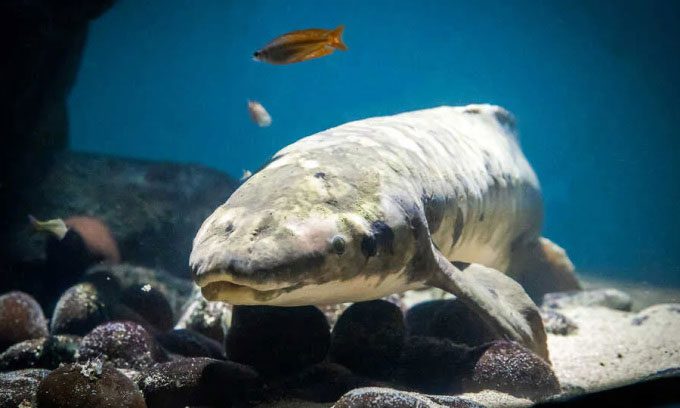Methuselah, a lungfish belonging to the Australian species, resides in the Steinhart Aquarium at the California Academy of Sciences, and has set a record for a lifespan of approximately one century.
The estimated age of Methuselah is between 92 and 101, according to DNA analysis by Dr. Ben Mayne from the Commonwealth Scientific and Industrial Research Organisation (CSIRO) and Dr. David Roberts from the Queensland water agency Seqwater, as reported by CBS News on September 20. This new estimate significantly surpasses the previous figure of 84 years.

Methuselah, the Australian lungfish (Neoceratodus forsteri) at the Steinhart Aquarium, is the longest-living fish in a tank in the world. (Photo: California Academy of Sciences).
Methuselah, belonging to the species Australian lungfish (Neoceratodus forsteri), has been at the Steinhart Aquarium since November 1938. It has outlived over 200 other fish from Australia and Fiji that arrived at the aquarium during the same period.
“We knew Methuselah arrived here in the late 1930s, but there was no way to determine its age at that time. So, it’s fascinating to obtain scientific information about the actual age of this creature,” said Charles Delbeek, project manager at the Steinhart Aquarium.
In the recent study, in addition to Methuselah, Mayne and Roberts also sampled 30 lungfish from six other institutions in the U.S. and Australia to create a living lungfish database, thus enhancing the accuracy of the species’ age “clock” based on its DNA. The research employed a new non-invasive method, taking a small tissue sample from the fin measuring less than 0.5 cm2.
“Knowing the exact age of fish in a population, including the maximum age, is crucial for management. This tells us how long a species can survive and reproduce in the wild. This information is essential for modeling population viability and the reproductive potential of the species,” Mayne stated.
“This is also a rare and valuable opportunity for researchers to access fish with exceptionally long lifespans like Methuselah, which is cared for by the California Academy of Sciences, as it helps us understand the maximum lifespan of a species under ideal care conditions,” he added.


















































